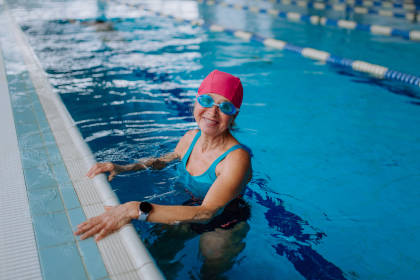Rheumatoid arthritis is a chronic autoimmune disease that causes pain, stiffness, and swelling in and around the joints, making it difficult to move.
No More Pill Sorting! Our Pharmacy Pre-sorts and Packages Your Pills
But did you know that staying physically inactive and not moving your joints can actually make them even more stiff, potentially to the point where they can further restrict your mobility?
Mild exercise, movement, and staying active help improve range of motion and ease symptoms of rheumatoid arthritis, like joint pain and stiffness. In this article, we will discuss some simple tips to stay active with rheumatoid arthritis that will help improve joint pain and inflammation and enhance your range of motion.
Why Is It Important To Stay Active With Rheumatoid Arthritis?
Many seniors with rheumatoid arthritis are reluctant to engage in any form of movement, physical activity, or exercise as they think it may worsen their pain.
However, mild activity, movement, and exercise are the key treatments of rheumatoid arthritis that improve flexibility and strength, aiding in joint function.
Moreover, the inflammation associated with rheumatoid arthritis increases the loss of muscle mass, and mild aerobic activity not only helps build muscle but also prevents the loss of bone density.
Seniors with rheumatoid arthritis who experience chronic pain should avoid high-intensity physical exercises that involve sudden, excessive, or prolonged movements. But mild physical activity does no harm and prevents your joints and muscles from getting stiffer.
5 Powerful Tips To Stay Active With Rheumatoid Arthritis (That Helps Ease Pain)
You may experience low self-esteem and feel unmotivated to stay active with rheumatoid arthritis, which is completely normal. These five powerful tips will not only boost your motivation but also help improve your range of motion and ease joint pain.
1. Start Small and Simple
The number one tip is to keep everything simple and start small. Never stress or push yourself beyond your limit or do something unbearable.
Slowly start moving your joints and stop before you feel excessive pain. Repeat the activity a few times throughout the day. Slight discomfort is normal. Once you develop stamina and strength, you can extend your movements. Start by doing these exercises once or twice a week and build up the frequency weekly based on how you feel.
MedBox: Never Sort Medications Again
2. Set a Daily Doable Goal for Exercise

Before you go to sleep, plan and set a small, doable, realistic goal for your next day that should include mild aerobic exercise or joint movement. Setting a small goal and accomplishing it also releases the feel-good hormones in your body, promoting a sense of happiness and well-being.
Slow walking inside or outside the house is the best form of physical activity for seniors with arthritis who experience difficulty with movements. You can also plan at least 10 – 15 minutes of slow walking every day in your garden or outdoors, which will keep your joints moveable and help you stay active. If you feel unstable during walking, make sure your home is set up properly to prevent falls. This may include checking mats and rugs to make sure they are secure. Also, make sure chairs are sturdy, and other furniture does not have sharp edges.
Other low-impact exercises that can help you stay active and refreshed include water aerobics, swimming, and bicycling.
Studies show that mild exercise does not worsen arthritis symptoms. In fact, it improves the patient’s quality of life by relieving pain and improving muscle strength and cardiovascular fitness.
3. Look for Activities That You Enjoy
The third tip is to look for physical activities that you enjoy that involve moving your joints moderately. But don’t make your routine filled with hard or challenging tasks.
Some fun activities with moderate physical movement can include light gardening activities, dancing gently to your favorite music, performing seated chair exercises, swimming or walking in the pool, or playing some sports like table tennis, golf, or badminton. If you have grandchildren, another option is to play fun games with them. Make sure you warm up and stretch regularly before exercise.
4. Eat Healthy
Without taking care of your nutrition, staying active can be difficult. Make sure that you get adequate nutrition and that your vitamin D, calcium, and magnesium intake meet your daily requirements.
Foods such as beans, lentils, peas, seafood, chopped or sliced fruits and vegetables, dairy products, whole grains, and poultry should be added to your diet.
Seniors who are unable to meet all their nutritional requirements with food should take nutritional supplements after consulting with their healthcare professional or nutritionist.
5. Physical Therapy
You can also consult a physical therapist trained in inflammatory diseases to plan a customized exercise routine based on your condition. You won’t have to take regular classes. Even two to three sessions can be enough to learn the physical activity routine designed for you. Check with your doctor to see if you may benefit from a referral for consultation with a physical therapist.


